When Michael Jackson died, an impromptu dance party took place just outside my window. A young woman pulled up in a car wearing her best 80s outfit; she turned on her hazards and took a votive candle and a stuffed monkey from the back seat . Resting those against a nearby lamppost, she left the car windows down and played the same 5 MJ songs while dancing in the street. More and more people gathered around her, many started to dance with. The ceremony lasted about four hours.
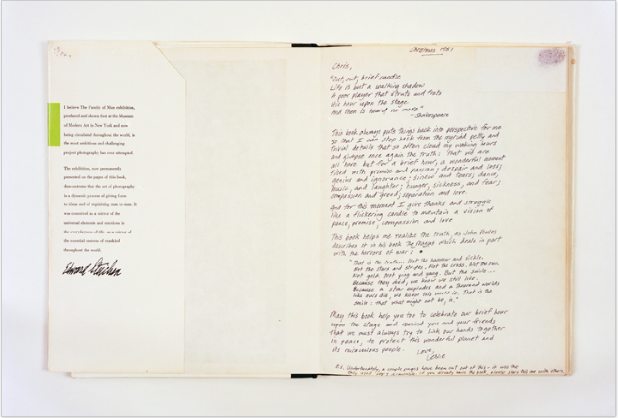
Jason Lazarus, "Untitled," found Family of Man catalogue with marginalia, 2010. Archival inkjet, 60" x 89".
Michael Jackson epitomizes celebrity and, while alive, collapsed under the weight of his own signification. He was not a person, he was a pop star, and works like Jeff Koons‘s Michael Jackson and Bubbles is endemic of the mockery/adulation his life possessed. Jason Lazarus dives headfirst into that din. While his Michael Jackson Memorial Procession is one piece of many, he consistently manages to memorialize events, transforming their potential irony into intimate, artistic monuments. Similarly, when Lazarus and Claire went to get an HIV test, it was a performative gesture. While she took the test, she had not been previously concerned about her health. Lazarus asked her to do it. Nevertheless the fifteen minute wait period transcended that performance as it gathered anxiety. The photograph was taken, as evidence. [Claire awaiting 15 minute HIV test results, (Chicago)] Photography is a suspicious medium. Lazarus acknowledges this and uses it to his advantage.
Caroline Picard: Can you tell me a little bit about your background and how you came to be an artist? Would you call yourself an artist? What would you characterize as your medium?
Jason Lazarus: I moved from Kansas City, MO, to Chicago to attend DePaul University, where I majored in marketing…upon graduation I worked in marketing at Court Theatre in Chicago. Court features contemporary adaptations of classics: Shakespeare, Tennessee Williams, et al. And I swear that was my introduction to creative conceptual thinking, watching them mount alternative costume, set, and script strategies. At the same time, I just happened to start taking photography classes at night for fun at Chicago’s Hyde Park Art Center.
CP: Do you feel like there are any pivotal moments in your artistic development? What would those be and why were they significant?
JL: Yes, I had no art background whatsoever and then just plunged into an MFA program at Columbia College in Chicago, where I focused on photography, worried about whether I could “make it” there or anywhere. Midway through, the Chair of the department, Bob Thall, told me he was worried about me when I enrolled, that they had barely let me into the program. He added that [because of my] critique I had, to him, proved he had made the right bet to let me in. That felt good. Later I was working at an apartment leasing agency and almost took a job teaching high school math in NYC, but decided to redouble my efforts to be an artist. Soon after, I was teaching at Columbia College, the start of my teaching career. It was an epically important moment, now, when I look back.
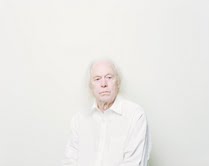
Jason Lazarus, "Eric Becklin, first human to see the center of our galaxy," 2010, archival inkjet, 40" x 50"
CP: Will you talk a little about your Michael Jackson Memorial Procession? I read about it on your blog and heard about it from different participants, but I was also interested in hearing more about your experience in the “sonic wall” of your pirate radio procession, as well as the way you were inspired to respond to the event of Jackson’s death (you refer specifically to the “street energy” of that evening)?
JL: MJ’s death created a self-generated afternoon/evening sonic outburst all over Chicago…it was a sonic memorial that was ad hoc, continually changing, and 100% reflective of MJ’s singular reach to multiple audiences. What pop artist nowadays reaches across so many boundaries at once? My friends and I discussed the sonic phenomenon of the day of his death afterward, and those conversations stuck with me. Later, I conceived that a pirate radio station broadcasting to an organized mass of processional cars on the anniversary of his death would be a great re-imagining, homage, performance, sonic sculpture sort of piece. I didn’t care what it was, I wanted to do it. Later the details solidified: inviting friends and friends of friends to participate, a processional route that went from Gary [Indiana] to Chicago and then through parts of town that spanned disparate ethnic, racial, and class divisions in Chicago (reflective of MJ’s music), screenprinted MJ flags for every vehicle (softly reminiscent of funeral vehicle flags), and the distribution of still cameras and video cameras for participants to document their experience.
The procession was amazing. People responded: they danced, they clapped, they smiled, and at times they sent a more solemn signal of approval—a fist, a salute, or hands behind their back carefully observant. The procession took five and a half hours. Upwards of 30 cars were involved, and the pirate radio station actually worked—the 1-2 mile space we occupied as we moved was perfectly synchronized (big thank you to my roommate for his expertise with broadcasting).
After looking through all the documentation I received, I settled on one image to represent the whole procession. The participants (we) were not interesting to me; the city’s pedestrians and their response was. When our gesture was successfully received by a variety of people I’ll never see again, I thought this momentary bridge or connection, was the success of the project. Upon editing down the images the only featured responders, I discovered Paul Fusko’s RFK, a documentation of onlookers to RFK’s casket being shipped via train from NYC to Washington, D.C.—a beautiful predecessor.
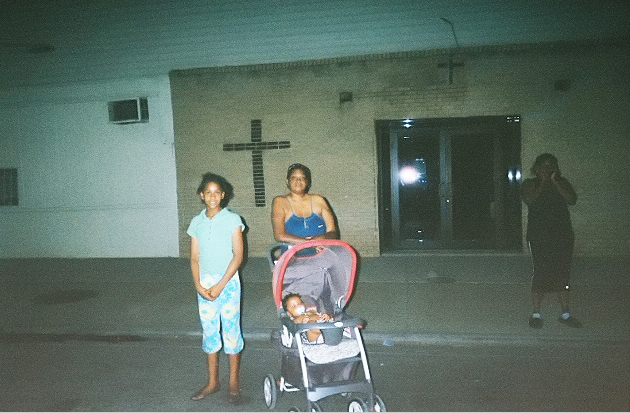
Jason Lazarus, "Michael Jackson Memorial Procession, June 25th 2010, (Gary IN to Chicago)," 2010, archival inkjet, 30"x 40"
The final image is a family, I believe photographed on Halsted between 47th and 87th streets, featuring a reserved/observant/curious/maybe dubious mother, a smiling and respectful daughter with her hands respectfully clasped, and a crying baby. Off to the right is another observer who had her hands clasped up to her face obviously responding in some kind of physical exclamation. The flash reflected in the (church?) implicates us, the cross organizes the family, the low-fi snapshot camera underwhelms us in terms of beauty yet speaks to the evidentiary utilitarian end of photography. I love it more and more—that’s the one. Otherwise, the performance lives on as a sonic retelling of its history over and over, as slippery as the truth in photography that will always evade us anyways.
CP: I’ve noticed that your Michael Jackson Procession wasn’t the only homage to celebrity—you reference Jimi Hendrix and Nirvana—even in some of your more personal work, like the self-portrait of Artist on Vacation, where you’re celebrating/capturing an idea of the artist and somehow morphing yourself into that representation/label—yet I also feel like the photograph of your father’s pillow serves a similar function too—somehow your photos become participatory relics or icons. Do feel like there is something that connects this work? And what are you reaching for?
JL: Let me rephrase? How does all of this stuff reconcile with each other? I think I started making more overt self-portraits (as in Artist On Vacation) and started to soften my approach and let the larger group of images evoke the conceptual self-portrait on its own visual/textual merit. The work is an attempt to trace my personal narrative and the way it is symbiotic or discordant with larger narratives of history, culture, politics, economy, etc. To place a more epic and public photo like the Obama presidential rally light aura next to My Fathers Pillow seems an answer in navigating my experience and mirroring the viewer’s experience—they have their own personal narratives that momentarily all intersect when something epic happens, be it 9/11, the presidential election, a celebrity icon fucking up…to sum it up: we all do things like watch a solar eclipse with the rest of the world and then look down and realize we have gum on our shoe. This is our private/public tension, and I think it is fascinating, productive, poetic, especially when an arc of time is created that attempts to subjectively embrace both subjects as rich fodder for cultural production.
CP: Who took the photo of you as an artist and how did it come about?
JL: A road trip to Memphis, a motel off the highway, a random impulse, and I put my camera in my friend’s hand and said, “Hit the shutter when I come off the slide.” He nails it, obviously. Two years later just out of grad school, I dug this image up and thought of the title and that was the seed of all my post-graduate photo-making.
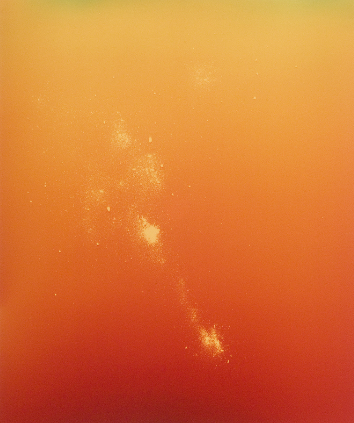
Jason Lazarus, "Study#10, (64y, 64m at F8 for 1 sec without ashes, ashes layed down, burned with flashlight, then burned with a second flashlight)," 2010, C-print, 20" x 24"
CP: I’m really interested in your Heinecken project and was wondering if you could talk a little about that—where it came from and how it developed?
JL: A friend, Luke Batten (of the art collaborative New Catalogue), was a long-time studio assistant of Heinecken’s and now manages his estate. I knew some of his cremated ashes were around as Heinecken’s last piece, called Residual Realities, was to distribute salt shakers filled with a portion of his cremated remains to family, friends, and associates upon his death. I got the idea to make a series of images using the ashes as a medium, and Luke, alongside Heinecken’s widow Joyce, gave their blessing. I decided to make photograms in the darkroom with the ashes, as Heinecken considered himself a para-photographer…never really shooting film in a camera but doing material mash-ups in the darkroom with the media-at-large as his ‘negative’ or fodder for art making.
CP: Do you feel like you have a public persona that is a part of your work?
JL: That’s an interesting question…not particularly. When I’m using humor or role-playing in the work, it’s with a wink toward the viewer. I feel they get the fact I’m doing things for the camera, and for them in order to make connections. Maurizio Cattelan is very deft in this regard, but for myself, when I am interviewed, I pull the curtains back and really try to discuss what’s on my mind, sans persona.
CP: Are there any other projects, recent or otherwise, that you’d like to mention?
JL: The Too Hard to Keep archive is my newest ongoing project. Participants are asked to submit images they have not yet destroyed but that are too hard to keep. The archive is meant to be a graceful repository, a repurposing of these private images so that the new public audience, of the site-specific installations curated from the archive, can trace and examine this desire/ritual/compulsion/need to orphan off parts of our archive as our narratives change. The archive will be open for submissions without end. I’m in the process of setting up partnerships with various cultural institutions nationwide to host a satellite drop-box for the archive. Thus far, these can be found at Chicago’s Hyde Park Art Center and SF Camerawork in San Francisco…

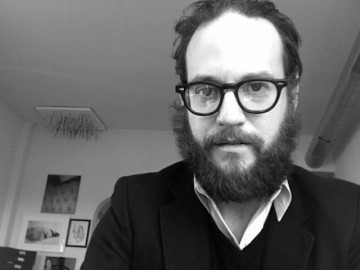
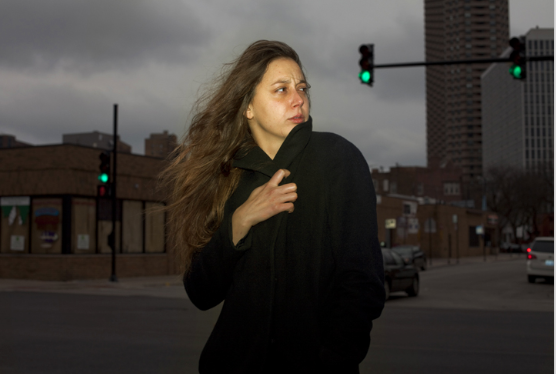
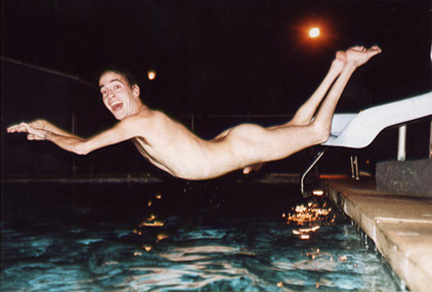
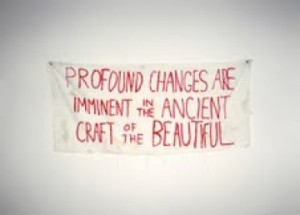



Pingback: Jason Lazarus on Art21 | The Lantern Daily
Pingback: Jason Lazarus: Your Time is Going to Come | HERE
Pingback: Exposures » Blog Archive » Too Hard to Keep
Pingback: TOO HARD TO KEEP: LE FOTO SOSPESE DEL BLOG DI JASON LAZARUS |
Pingback: Jason Lazarus « WeWasteTime